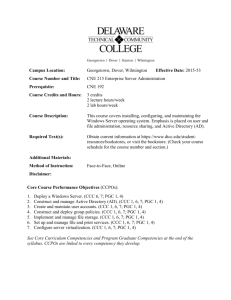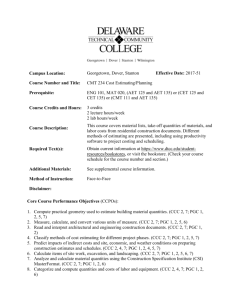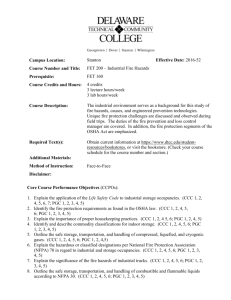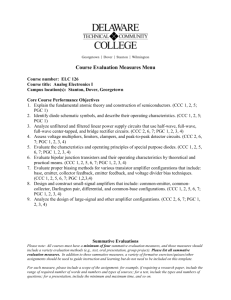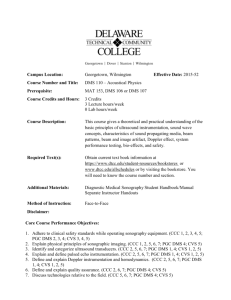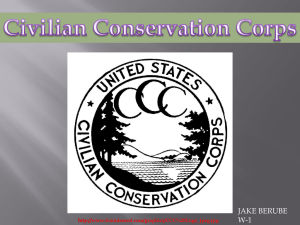LAS 273 201551 - E
advertisement
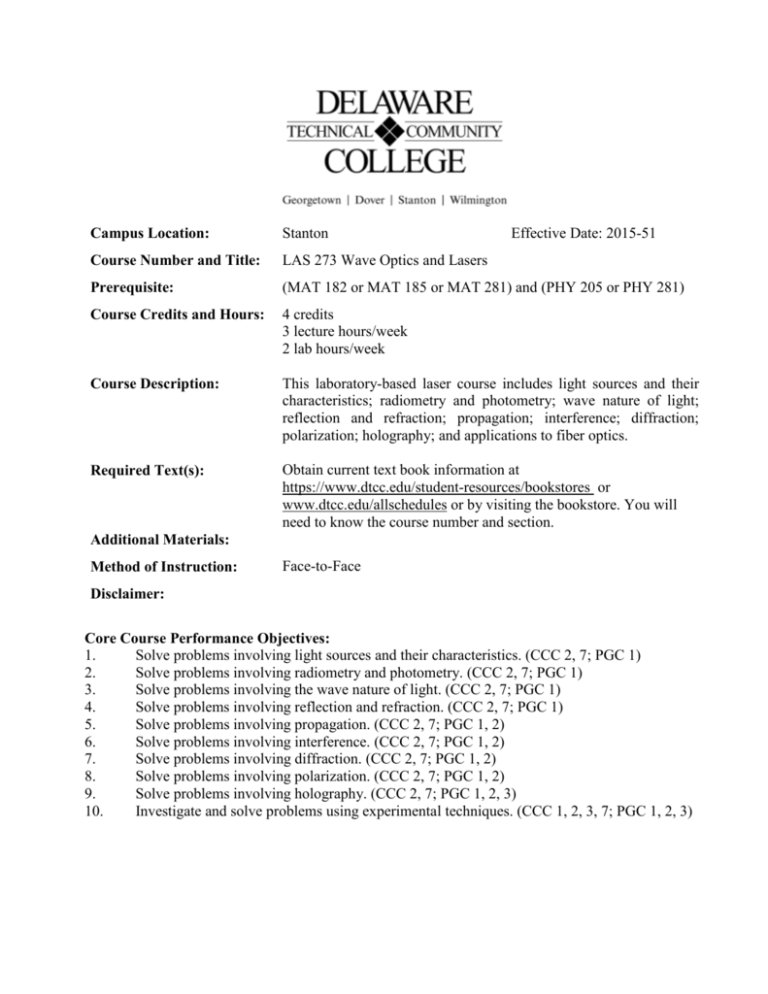
Campus Location: Stanton Effective Date: 2015-51 Course Number and Title: LAS 273 Wave Optics and Lasers Prerequisite: (MAT 182 or MAT 185 or MAT 281) and (PHY 205 or PHY 281) Course Credits and Hours: 4 credits 3 lecture hours/week 2 lab hours/week Course Description: This laboratory-based laser course includes light sources and their characteristics; radiometry and photometry; wave nature of light; reflection and refraction; propagation; interference; diffraction; polarization; holography; and applications to fiber optics. Required Text(s): Obtain current text book information at https://www.dtcc.edu/student-resources/bookstores or www.dtcc.edu/allschedules or by visiting the bookstore. You will need to know the course number and section. Additional Materials: Method of Instruction: Face-to-Face Disclaimer: Core Course Performance Objectives: 1. Solve problems involving light sources and their characteristics. (CCC 2, 7; PGC 1) 2. Solve problems involving radiometry and photometry. (CCC 2, 7; PGC 1) 3. Solve problems involving the wave nature of light. (CCC 2, 7; PGC 1) 4. Solve problems involving reflection and refraction. (CCC 2, 7; PGC 1) 5. Solve problems involving propagation. (CCC 2, 7; PGC 1, 2) 6. Solve problems involving interference. (CCC 2, 7; PGC 1, 2) 7. Solve problems involving diffraction. (CCC 2, 7; PGC 1, 2) 8. Solve problems involving polarization. (CCC 2, 7; PGC 1, 2) 9. Solve problems involving holography. (CCC 2, 7; PGC 1, 2, 3) 10. Investigate and solve problems using experimental techniques. (CCC 1, 2, 3, 7; PGC 1, 2, 3) See Core Curriculum Competencies (CCC) and Program Graduate Competencies (PGC) at the end of the syllabus. Course objectives are coded to the competency(cies) they develop. Measurable Performance Objectives: Upon completion of this course, the student will: 1. Solve problems involving light sources and their characteristics. 1.1 Solve problems involving point and extended sources. 1.2 Solve problems involving radiant power and emissivity. 2. Solve problems involving radiometry and photometry. 2.1 Solve problems involving radiant quantities. 2.2 Solve problems involving photometric quantities. 3. Solve problems involving the wave nature of light. 3.1 Solve problems involving wavelength. 3.2 Solve problems involving frequency. 4. Solve problems involving reflection and refraction. 4.1 Solve problems involving reflected laser power. 4.2 Solve problems involving refracted laser power. 5. Solve problems involving propagation. 5.1 Solve problems involving laser beam irradiance. 5.2 Solve problems involving laser beam attenuation. 6. Solve problems involving interference. 6.1 Solve problems involving superposition. 6.2 Solve problems involving Young’s double-slit experiment. 6.3 Solve problems involving thin films. 7. Solve problems involving diffraction. 7.1 Solve problems involving Fraunhofer diffraction. 7.2 Solve problems involving diffraction-limited optics. 7.3 Solve problems involving the Fresnel number. 8. Solve problems involving polarization. 8.1 Solve problems involving linear polarization using Jones calculus. 8.2 Solve problems involving circular polarization using Jones calculus. 8.3 Solve problems involving elliptical polarization using Jones calculus. 9. Solve problems involving holography. 9.1 Solve problems involving holographic configurations. 9.2 Solve problems involving holographic procedure. 10. Investigate and solve problems using experimental techniques. 10.1 Investigate and solve problems involving light sources and their characteristics. 10.2 Investigate and solve problems involving radiometry and photometry. 10.3 Investigate and solve problems involving the wave nature of light. 10.4 Investigate and solve problems involving reflection and refraction. 10.5 Investigate and solve problems involving propagation. 10.6 Investigate and solve problems involving interference. 10.7 Investigate and solve problems involving diffraction. 10.8 Investigate and solve problems involving polarization. 10.9 Investigate and solve problems involving holography. Evaluation Criteria/Policies: Students will demonstrate proficiency on all Core Course Performance Objectives at least to the 75 percent level to successfully complete the course. The grade will be determined using the College Grading System: 92 – 100= 83 – 91 = 75 – 82 = 0 – 74 = A B C F Students should refer to the Student Handbook for information on Academic Standing Policy, Academic Honesty Policy, Student Rights and Responsibilities, and other policies relevant to their academic progress. Core Curriculum Competencies: (The competencies every graduate will develop) 1. Communicate clearly and effectively both orally and in writing. 2. Demonstrate effective problem solving and reasoning skills. 3. Work effectively in groups of people from diverse backgrounds. 4. Demonstrate ethical and professional understanding and conduct. 5. Apply appropriate information literacy skills to locate, evaluate, and use information effectively. 6. Use computer technology appropriate to the field. 7. Use scientific and mathematical reasoning appropriate to the technology. Program Graduate Competencies: (The competencies every graduate will develop specific to his/her major.) 1. Set-up, conduct, and troubleshoot systems involving laser/optics applications. 2. Construct and test basic laser/optics subassemblies. 3. Perform maintenance and systems checks on laser/optics components/systems.
